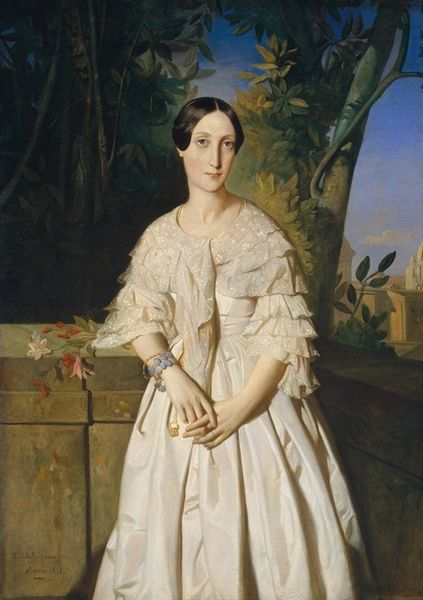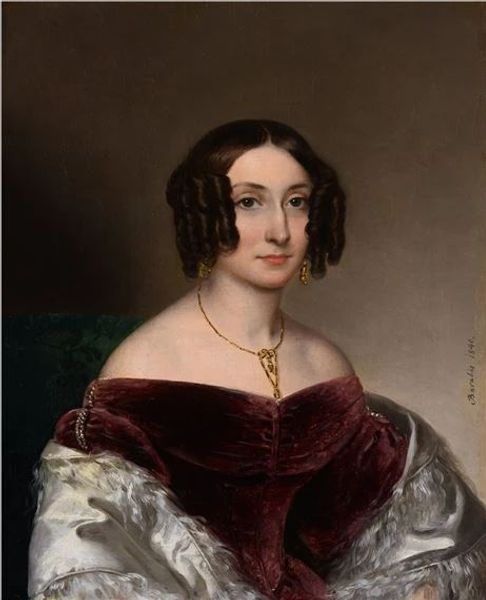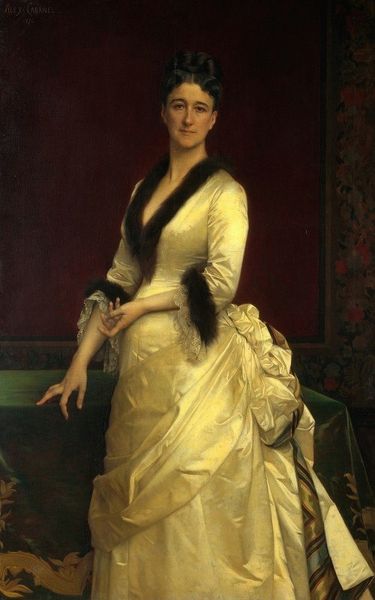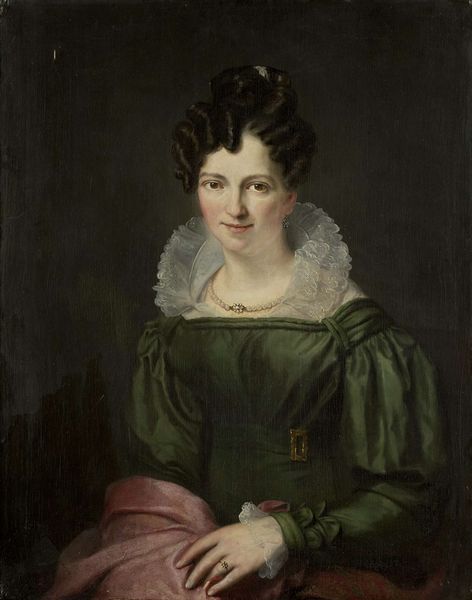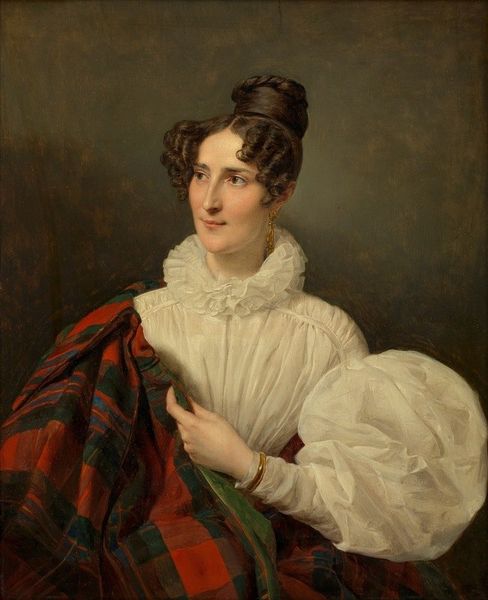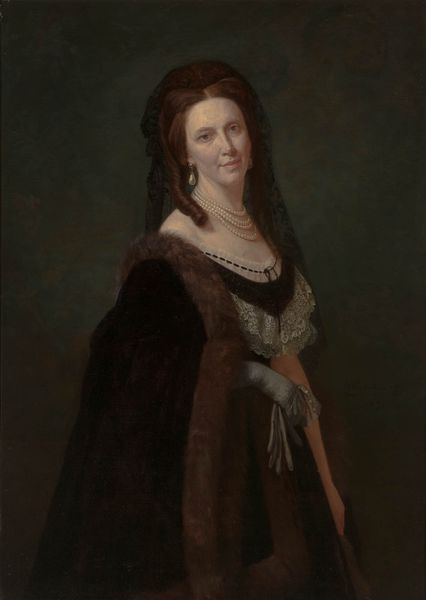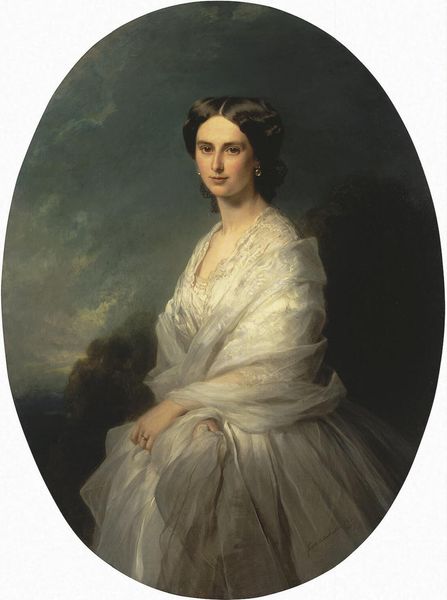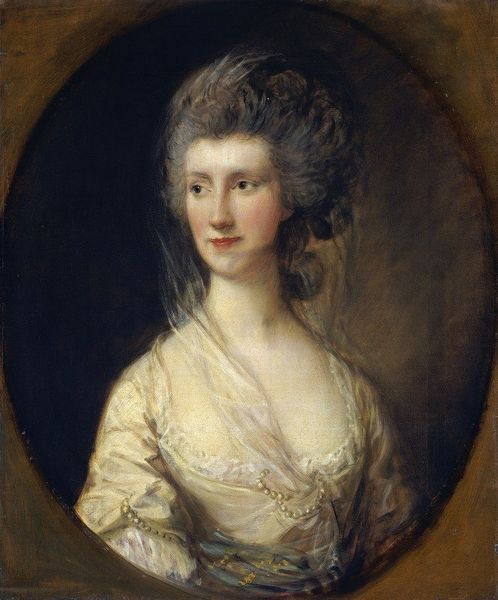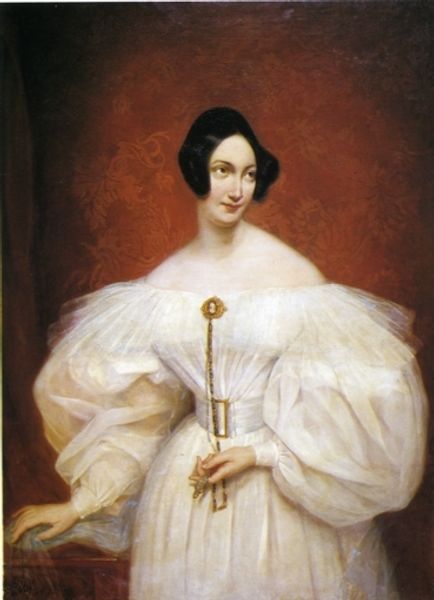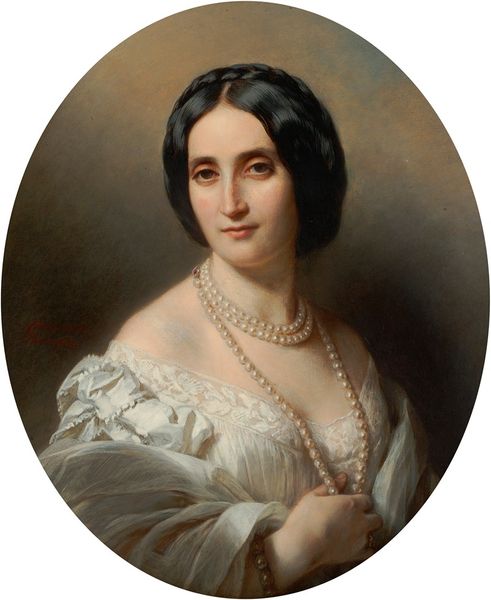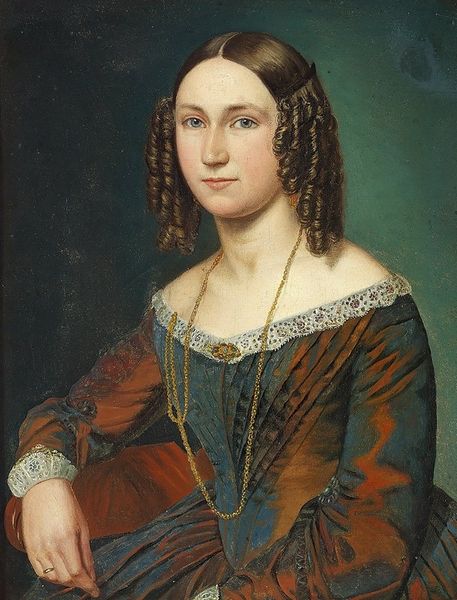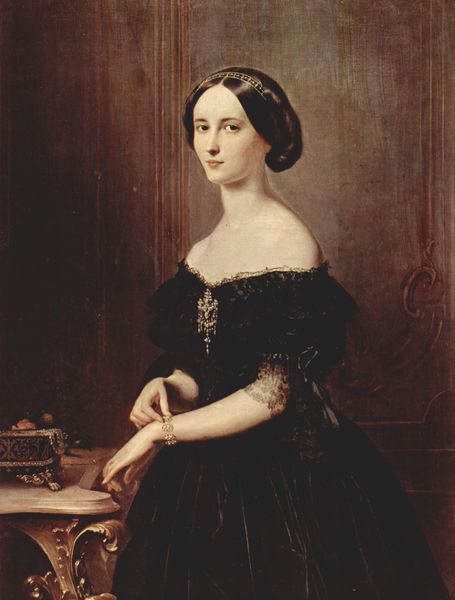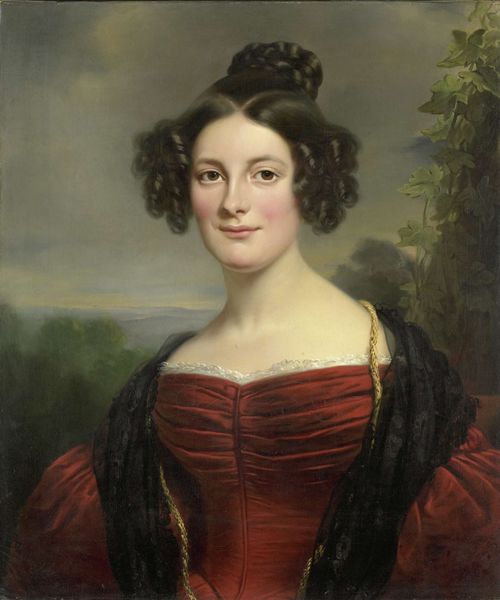
painting, oil-paint
#
portrait
#
painting
#
oil-paint
#
romanticism
#
realism
Copyright: Public Domain: Artvee
Curator: Looking at Ferdinand Georg Waldmüller’s 1833 oil on canvas, "Barbara von Schickh, als Braut von Wolfgang Ritter von Manner," one can't help but feel the artist meticulously captured the likeness and air of his sitter. Editor: Indeed! The painting immediately evokes a sense of poised anticipation, yet also a strange vulnerability. The dark backdrop and the way she's clutching her shawl feels protective, almost melancholic. Curator: It is intriguing to think about what marriage meant for women during the 19th century. Waldmüller portrays Barbara in a specific role, encoding layers of expectation and societal values through his artistic choices. Editor: Precisely! The portrait operates almost as propaganda for idealised femininity. How might we, as modern viewers, read this portrayal considering evolving dialogues around consent and women's agency in arranged marriages of the era? Curator: Considering the symbols, the sheer fabric of her dress speaks of purity, the shawl of domestic comfort… these symbols are building blocks in constructing Barbara’s role. Editor: And these symbols reinforce prescribed societal expectations! The very act of capturing her image—and effectively claiming ownership of it—highlights power dynamics at play. We can’t overlook the colonial undertones in displaying such images and consider this one painting within a constellation of others, all perpetuating particular views. Curator: I agree; images solidify culture. The soft, warm palette used by Waldmüller—typical of Romantic Realism—adds to a veneer of placidity and idealized love, further mythologising that moment. Editor: This work offers a window into the layered meanings behind representation, tradition and social practice, all seen through the eyes and artistic skills of one artist working during a transformative epoch. I hope this helps our audience understand it more critically. Curator: An exploration that truly resonates today, in its ability to connect historical context with ongoing struggles. I see this now with new eyes.
Comments
No comments
Be the first to comment and join the conversation on the ultimate creative platform.
